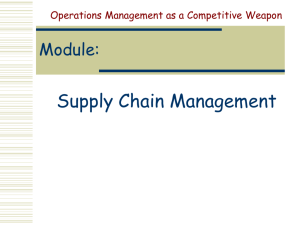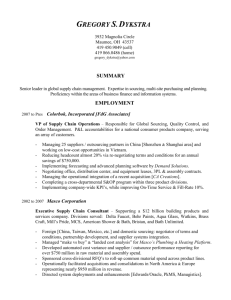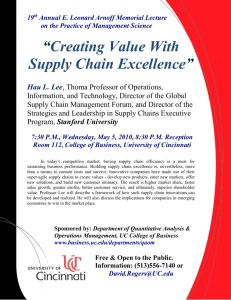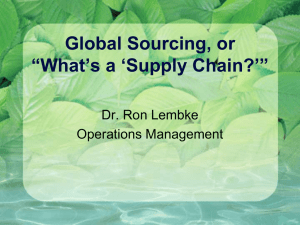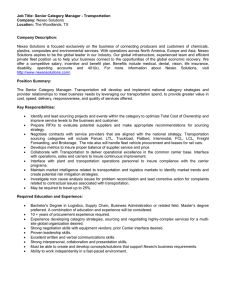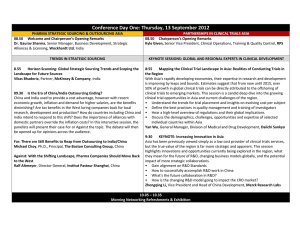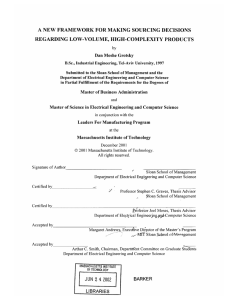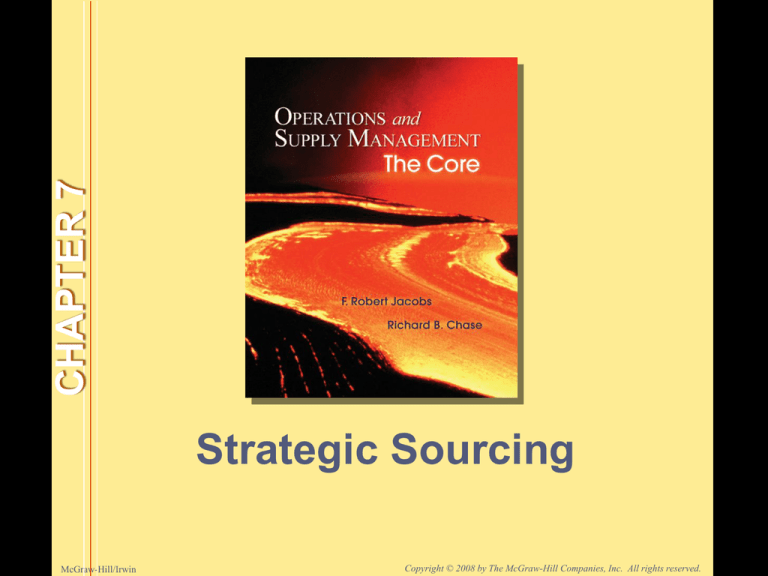
CHAPTER 7
Strategic Sourcing
McGraw-Hill/Irwin
Copyright © 2008 by The McGraw-Hill Companies, Inc. All rights reserved.
Learning Objectives
After completing this chapter you will:
Know how important sourcing decisions go beyond
simple material purchasing decisions
Understand the “bullwhip effect” and why it is important
to synchronize the flow of material between supply chain
partners
Understand how characteristics of supply and demand
have an impact on structuring supply chains
Know the reason for outsourcing capabilities
Know how to calculate inventory turnover and days of
supply
Know the basic building blocks for an effective mass
customization program
Strategic Sourcing
Strategic Sourcing is the development
and management of supplier
relationships to acquire goods and
services in a way that aids in achieving
the immediate needs of the business
Bullwhip Effect
The magnification of variability in orders in the supplychain
Retailer’s Orders
Wholesaler’s Orders
Time
A lot of
retailers each
with little
variability in
their orders….
Time
…can lead to
greater variability
for a fewer number
of wholesalers,
and…
Manufacturer’s Orders
Time
…can lead to
even greater
variability for a
single
manufacturer.
Hau Lee’s Concepts of Supply Chain Management
Hau Lee’s approach to supply chain (SC) is one of
aligning SC’s with the uncertainties revolving around
the supply process side of the SC
A stable supply process has mature technologies
and an evolving supply process has rapidly changing
technologies
Types of SC’s
Efficient SC’s
Risk-Hedging SC’s
Responsive SC’s
Agile SC’s
Hau Lee’s SC Uncertainty Framework
Demand Uncertainty
Supply
Uncertainty
Low
(Stable
Process)
High
(Evolving
Process)
Low (Functional
products)
High (Innovative
products)
Efficient SC
Responsive SC
Ex.: Grocery
Ex.: Computers
Risk-Hedging SC
Agile SC
Ex.: Hydroelectric power
Ex.: Telecom
What is Outsourcing?
Outsourcing is defined as the act
of moving a firm’s internal
activities and decision
responsibility to outside providers
Reasons to Outsource
Organizationally-driven
Improvement-driven
Financially-driven
Value Density
Value density is defined as the value
of an item per pound of weight
It is used as an important measure
when deciding where items should be
stocked geographically and how they
should be shipped
Mass Customization
Mass customization is a term used to
describe the ability of a company to
deliver highly customized products and
services to different customers
The key to mass customization is
effectively postponing the tasks of
differentiating a product for a specific
customer until the latest possible point
in the supply-chain network
End of Chapter 7

